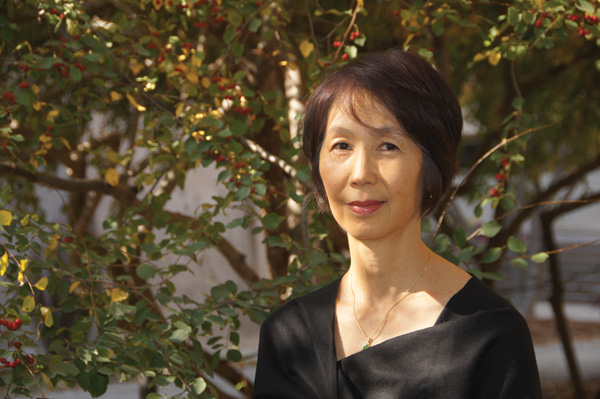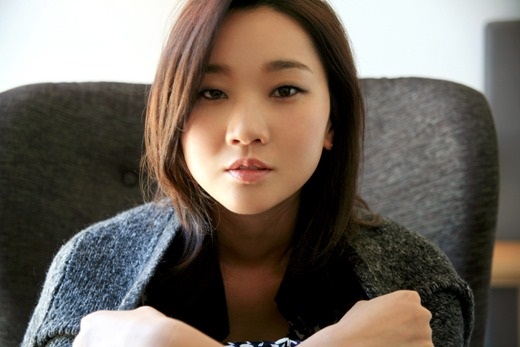People Mover
From a 19th-century rebellion of miners in the Caribbean to the plight of Korean “comfort women” during World War II, choreographer, dancer and director Peggy Choy explores diverse themes in her body of work.
by SUEVON LEE
Movement has been a constant in Peggy Choy’s family. Her father’s grandfather came to Hawaii from Korea to work on the sugar plantations. Her mother’s father left Korea for China, then San Francisco, fleeing persecution from Japan for his participation in Korea’s independence movement.
As for Choy, born in Chicago and raised in Hawaii, she stayed put in the U.S. her entire life, but her work is all about movement. The dancer, choreographer and director uses a daring combination of Asian dance, martial arts and urban dance forms to create a visceral, provocative display of storytelling through motion.
Historical events often inform Choy’s choreography, and it’s no different with her latest piece, Thirst, a captivating, dynamic production performed in late June at the Galapagos Art Space in Brooklyn. Framed as a flashback, the story revolves around an 1889 rebellion on the Caribbean island of Navassa. African contract miners, subject to brutal treatment, revolted against their supervisors, leading to the violent deaths of five managers and charges of murder.
The performance—told in nine separate segments—featured a cast of nine dancers and an actor-narrator. Set to a score by jazz pianist Michele Rosewoman, the show showcased the styles of modern dance, martial arts, the Brazilian martial art known as Capoeira, and b-boy and b-girl styles.
The male and female dancers gracefully bent, twisted and pop-and locked in ways that mesmerized the audience, moving around the shallow pools, aisles and stage in the intimate venue to give full expression to the tone and dynamics of the production.
“It throws people off,” Choy said in an interview at a coffee shop in Manhattan, of the diverse subject matter she’s pursued.
Indeed, she does not shy away from tackling a range of historical themes or subjects. In 2013, she directed The Greatest! Hip Dance Homage to Muhammad Ali, at the boxing gym Gleason’s, in Brooklyn, which featured boxers, b-boys and a jazz score.
“More likely than not, I surprise people,” continued Choy. “My solution then and now is that I strive for respecting the particular culture that I’m trying to explore. If my intentions are respectful and well-meaning, then I think that helps.”
As the founder of Peggy Choy Dance, the third-generation Korean American takes a completely unique approach to dance that incorporates a fusion of styles and gives her dancers room to experiment and explore.
“What I find different about Peggy’s productions is the way she builds things up and how it starts with just an idea or music,” Ze Motion, a New York-based dancer and choreographer who’s worked with Choy for the last four years, wrote in an email. “What I appreciate the most is the fact that Peggy leaves us a little room to express ourselves. We live in a dance world where everything is square, in a box, everyone looking alike. She allows me to be on stage, expressing myself truly in her choreography.”
At 65, Choy still has a lithe and slender frame sculpted from years of dancing and, more recently, tai chi.
During the academic year, she teaches dance and Asian American studies at the University of Wisconsin, Madison. Her dance company is based in New York, where her son and daughter, both in their late 20s, also live.
Political activism and a trailblazing spirit are in Choy’s blood: her mother’s father, who was active in efforts to mobilize Korean independence from Japan, became a minister in the San Francisco Bay area and later monitored Korean laborer conditions in Mexico. Choy’s mother, an activist in Hawaii, protested U.S. involvement in Vietnam and supported Hawaii’s sovereignty from the mainland. Choy’s paternal uncle is Herbert Choy, the first Asian American to serve as a federal judge in the United States.
Choy gravitated to dance from a young age. She began taking ballet lessons at age 7, moving on to other forms such as flamenco and then modern dance at Reed College, where she studied anthropology and archeology.
“I wanted to become a modern dancer,” said Choy, who in addition to her masters in performance and choreography from the University of Wisconsin-Milwaukee, holds a master’s in urban regional planning from the University of Wisconsin, Madison, and a master’s in Southeast Asian studies from the University of Michigan.
“I actually grew restless because I thought modern dance was not answering to an internal need,” she said.
Thus, in her late 20s, Choy uprooted herself and traveled to Indonesia at a time when the country was just developing as a young, free nation, after its independence from Dutch rule.
“In Java you have traditional stories coming through India, and these are mythical stories that have everything in it—fighting, love, lust, war,” Choy explained, crediting her three years in Indonesia under the guidance of Sasminta Mardawa with influencing her style. “It answered for me what was missing in American modern dance.”
 From Thirst, performed at the Galapagos Art Space in Brooklyn N.Y. in late June. (Photo courtesy of JP Yim)
From Thirst, performed at the Galapagos Art Space in Brooklyn N.Y. in late June. (Photo courtesy of JP Yim)
Despite her various cultural influences and interests, Choy possesses a deep connection to her Korean roots that’s reflected in her work. She has explored a variety of Korean themes, from the female Korean divers known as haenyo in Moon Tides: The Women Divers of Jeju Island, to the plight of Korean “comfort women” who became sex slaves for the Japanese army during World War II in Seung Hwa: Rape/Race/Rage/Revolution, a solo dance performance that debuted in 1995 and included four parts.
Her early work, Choy said, generated mixed reviews from critics. “They said, ‘Oh, it’s too ethnic. Or it’s not physical enough. Or it’s just not mainstream enough,’” she recalled. “But I have never, ever gone along with what other people wanted. I just do what I do because of my background.”
In Thirst, her dancers represented the workers and supervisors that took part in the Navassa uprising, plus a trio referred to as simply “3 Ocean Women.”
“I wanted to give each of them an idea of who they were so they could give more intensity to their performances,” Choy said in staging the production. “I have to transfer my vision to my dancers, and they don’t necessarily share the same background as me.”
“I feel through dance you can transport, elevate, transform,” Choy added. “Dance has the capacity and potential to be very deep, to resonate with the individual person.”
This article was published in the August/September 2014 issue of KoreAm. Subscribe today! To purchase a single issue copy of the August/Sept. issue, click the “Buy Now” button below. (U.S. customers only. Expect delivery in 5-7 business days).









